Dances of Bali: A detailed guide
Bali is synonymous with dance. Whether religious temple dances like The Kecak Dance or entertainment for tourists, dancing traditions flourish here and are consciously cultivated. Balinese boys and girls are trained in traditional arts and culture from a very young age and dance is a vital part of Balinese culture.
Balinese integrate the dances into rituals to honour deities or communicate with the spiritual world through trance dances. Each performance starts with offerings, and dancers actively seek Taksu, a term for divine inspiration, through their prayers. Regularly featured at various temples in Bali Festivals and significant ceremonies, these dances are also staged for tourists to experience.
With a rich cultural background Bali is a favourite beach destination for people all over and if you too want to immerse yourself in some Bali delight then you can plan your holiday through Bali Trip Packages and get some Vitamin Sea.
Bali’s Traditional Dances
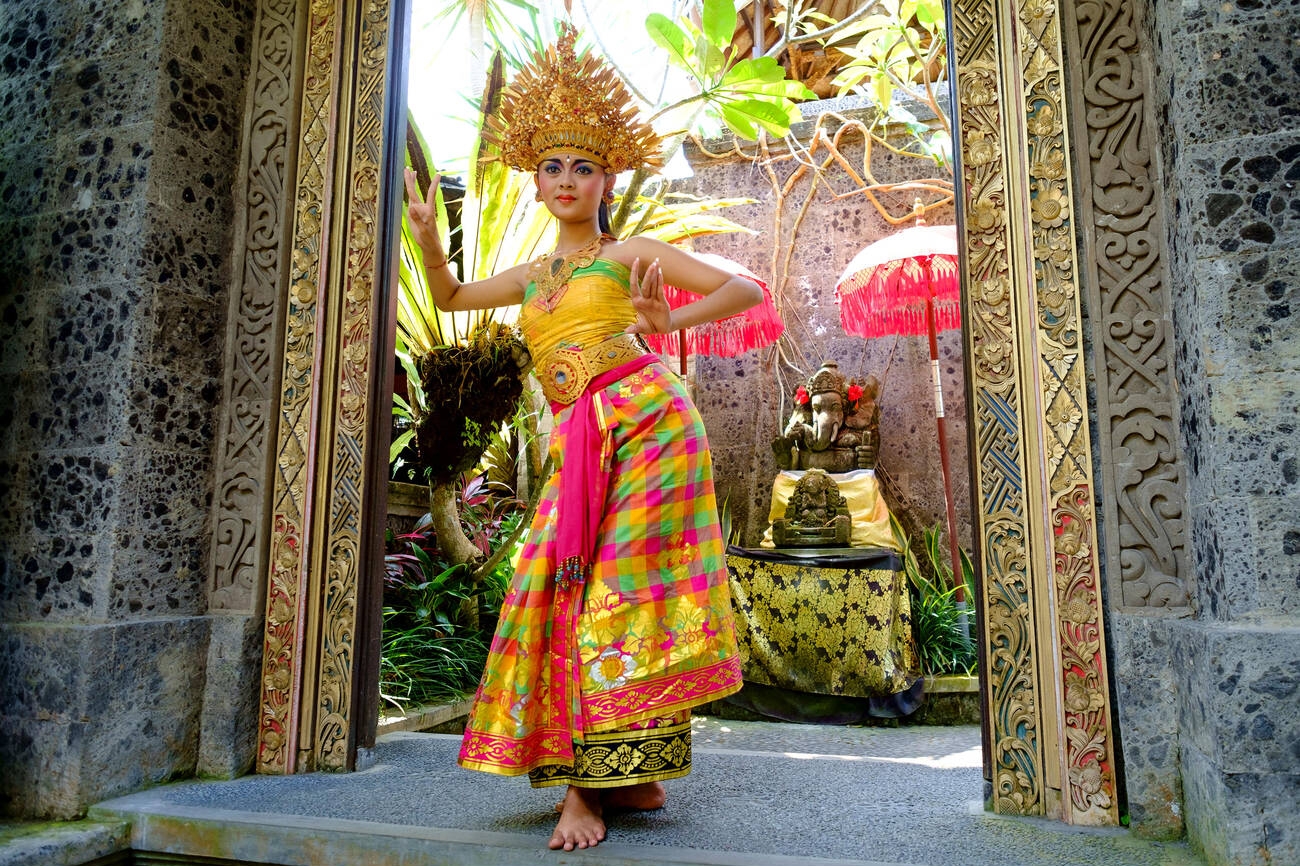
Balinese dance culture draws a lot of inspiration from ancient Hindu traditions of performing drama that tells stories through dance and music. Dances of Bali can represent how the character from Hindu scripture fights demons and evil spirits. Most Balinese dances have two common aspects- the Rangda and The Barong ( the witch and the great beast, in Balinese)
All parts of the body, including the face, eyes, and hands, need to move with life and grace in order to dance well and to tell stories. All around Bali, but notably in the villages of Ubud and Gianyar, you may find really talented dancers and instructors.
Balinese dance is accompanied by traditional percussion orchestras called gamelan, which assembles various rhythmic instruments made of bamboo, wood and bronze. The gamelan provides the rhythms that direct dancers’ movements. The Balinese have many kinds of traditional dances in Bali.
Suggested Read: Temples of Bali
There are various types of Balinese dances based on the history and culture of Indonesia. These are religious dances performed in places throughout Bali and Indonesia. Dances popular with visitors are the Kecak Dance, Legong Dance, and the Barong Dance.
UNESCO recognized three genres of traditional dances in Bali, Indonesia, as Intangible cultural heritage. The three genres include Wali (sacred dances), Bebali (semi-sacred dances), and Balih-balihan (dances for entertainment purposes).
1. Wali Dance
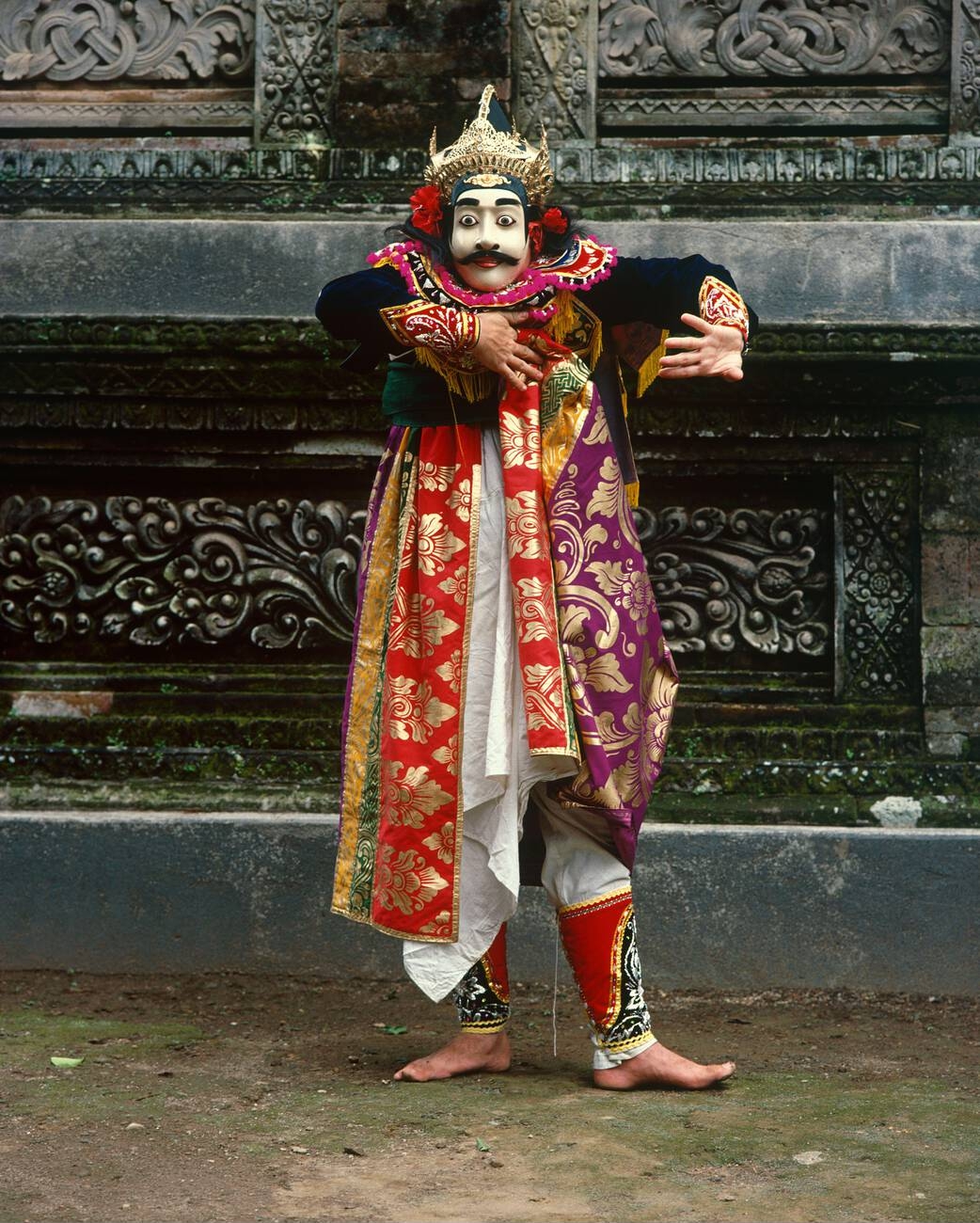
Bali or Wali dance is a traditional dance of Bali that is performed in spiritual ceremonies. The Wali dance does not tell a story, but only covers religious symbols. Here are some popular Wali dances.
- Rejang Dewa
Rejang is a sacred ceremonial dance that must be performed by teenage girls that haven’t yet menstruated. Commonly, it is performed during the temple ceremony procession to entertain the visiting Gods and spirits. The word “Rejang” means “offering” which the dancers offer themself to Gods.
- Sanghyang
The Sanghyang dance, a sacred Balinese tradition passed down from the Pre-Hindu era in Bali, is renowned for its trance-like nature, wherein the dancers’ bodies are believed to be inhabited by divine manifestations or ancestral spirits. Typically performed during sacred ceremonies, this dance is believed to possess the power to dispel negativity and prevent disease outbreaks.
This dance is performed by male and female dancers while chanting worship songs. There are three important elements in this dance namely smoke or fire, Sang Hyang songs, and medium both in the form of a person or a doll. The Sanghyang dance has several types of dances such as Sanghyang Dewa, Sanghyang Dangklik, Sanghyang Dedari and many more.
2. Bebali Dance
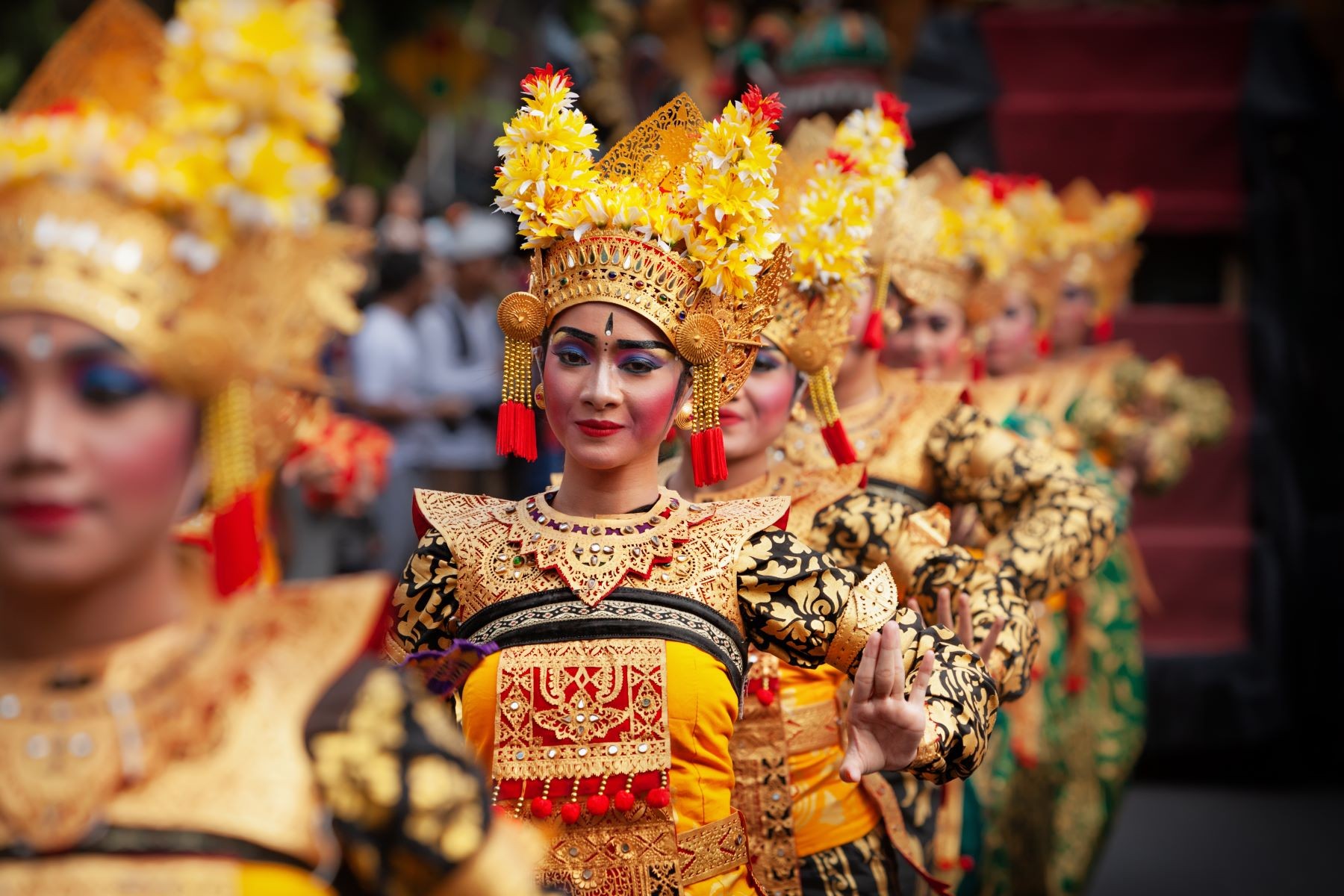
Bebali dance is a semi-sacred dances of Bali that functions as a ritual dance as well as an entertainment dance. It originated in the 14-19th centuries. Bebali Dance has a storyline, character, and still nurtures traditional Balinese values. Oftentimes, it is performed during rituals or ceremonies and can be found in temple compounds. Nevertheless, you may enjoy these dances, provided you adhere to the rules for entering a temple. Here are some Bebali dances:
- Topeng Dance
The Topeng dance of Bali is a drama dance where the dancers wear a paper or wooden mask which is known as the Balinese Mask. The word “Topeng” means mask. Therefore, this dance is also known as Mask Dance. The Topeng Dance is based on the story of heroines or human experiences in early kingdoms. This dance is used to be performed during ceremonies in temples.
- Gambuh Dance
The Gambuh dance stands as the oldest form of dances of Bali drama, characterized by its intricate movements and revered as a pinnacle of dance artistry. Regarded as the progenitor of all Balinese Classic dances, its origins trace back to the 15th century, drawing inspiration from the tale of Panji (Malat) originating in East Java.
Based on history, the Gambuh dance is strongly related to the collapse of the Majapahit Kingdom in the 15th century. At that time, all of the repertoires of Javanese literature were brought to Bali.
3. Balih-Balihan Dance
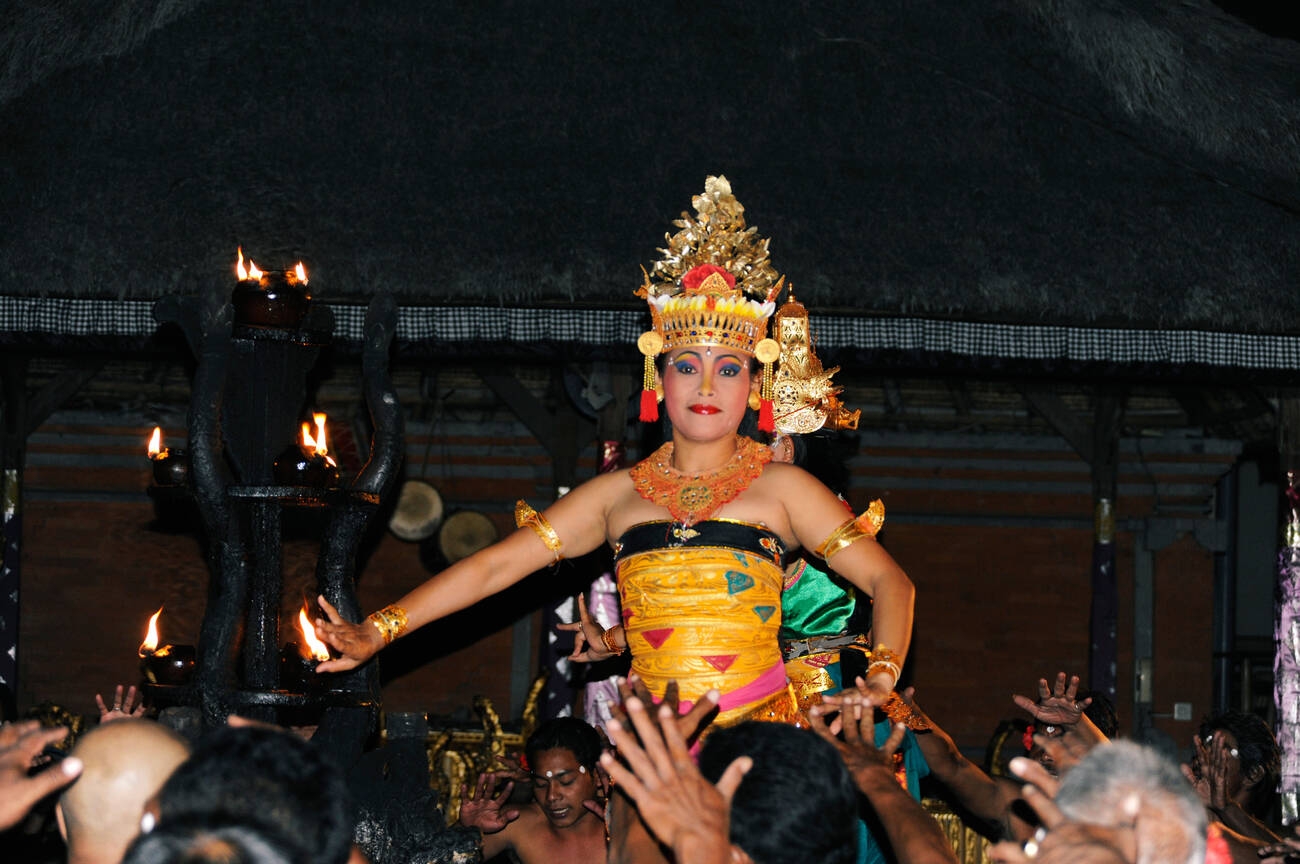
The Balih-Balihan dances of Bali have a purpose for show and entertainment. Nonetheless, it is rich in moral values. Here are some Balih-Balihan dances:
- Kecak Dance
Who doesn’t know Kecak Dance? Known as one of the most popular dances of Bali and also referred to as the Balinese Fire Dance, bare-chested men primarily perform it, chanting “cak, cak, cak.” The dance draws its inspiration from the Ramayana Epic.
- Legong Dance
The Legong dances of Bali holds the highest respect among the island’s classical contemporary royal dances. Its name, “Legong,” originates from “leg,” signifying suppleness or elasticity. This dance narrative originated from the tale of a king’s discovery of a lost Maiden named Rangkesari.
The Legong dance came into being as royal entertainment in the 18th century, blending elements from age-old traditions like the Gambuh dance and the Sanghyang Dedari trance dance, which are rich in ancient animal movements. Typically, the Legong dances of Bali showcases the talents of three exceptionally skilled female dancers. The characteristic of this dance is the sophisticated movement of fingers and feet as well as the intimate facial expressions.
- Janger Dance
Janger, a quintessential dances of Bali, has graced stages with its simple yet joyous movements. Originating in Bali during the 1930s, this dance features ten male-female pairs who animate the performance, set to the melodious tunes of gamelan or gender wayang.
The ensemble comprises women known as Janger and men referred to as Kecak, distinct from the Kecak Dance associated with Balinese fire rituals. These dancers take turns performing and vocalising the Janger melody. The belief is that women farmers, who sang together in groups to uplift their spirits and ease fatigue after working in the fields all day, originated the Janger dance. This communal singing evolved into a dance, fostering interactions with young men from neighbouring villages. The dance’s structure is square, harmonised by the geguntangan orchestra. The male dancers, sitting with crossed legs, execute detailed hand movements inspired by Pencak silat, a traditional martial art form.
Meanwhile, the female dancers kneel, singing the Janger tune and creating intricate patterns with their arms and hands. Performers categorise Janger as a Bali-balihan dance, staging it for entertainment or to enrich the festive ambiance of ceremonies.
Suggested Read: Bali in Summer
Dance Performance Schedules in Bali
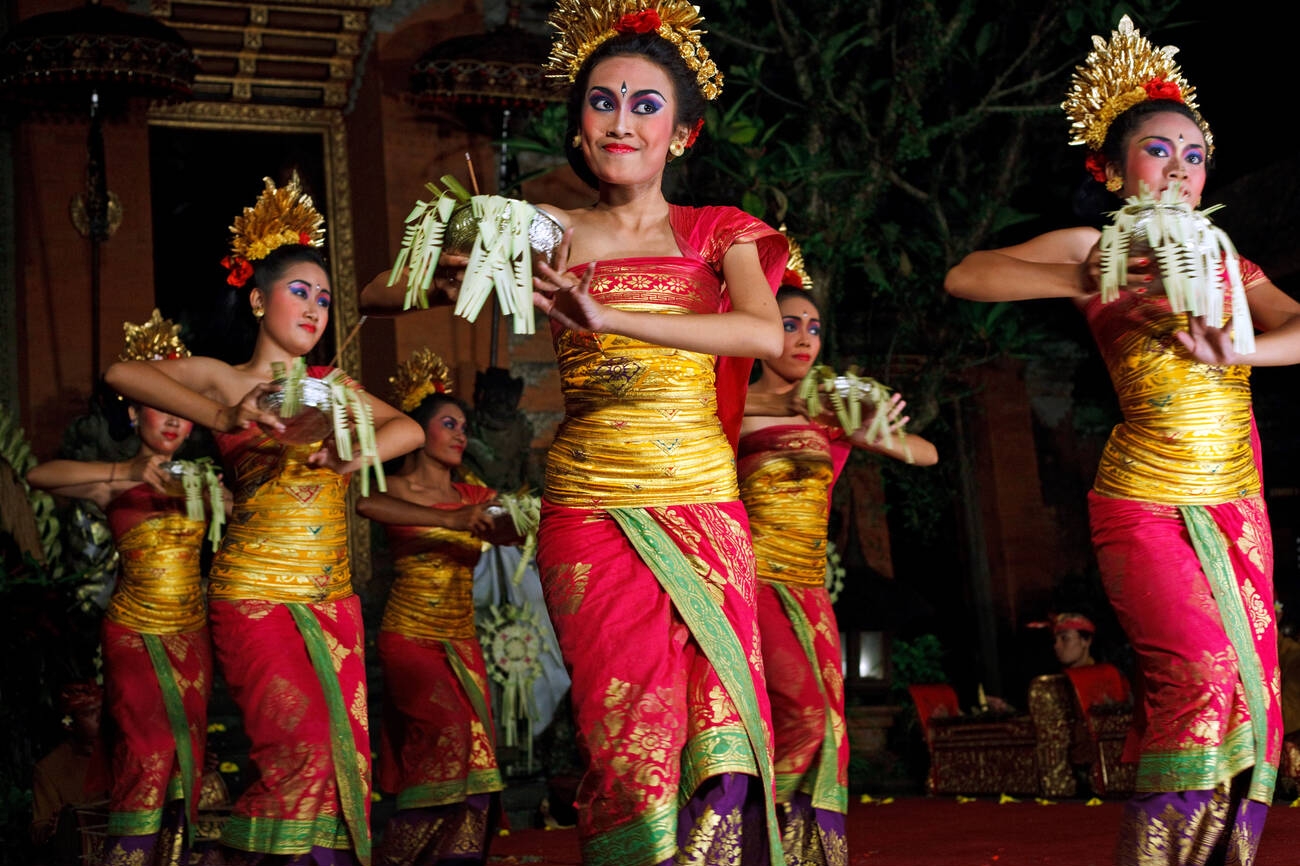
Dances in Bali occur on a regular schedule depending on location. To learn when you can view a dance performance in Bali you can find a dance schedule below in different venues across the Island of Bali. Here is a brief schedule of dance performances people may consider when making plans to attend.
Sunday:Barong and Keris Dance at Batubulan Village at 9:30 A.M. Kecak Fire and Trance Dance at Uluwatu Temple at 6:00 P.M. Legong of Mahabharata Dance at Ubud Palace at 7:30 P.M.
Monday: Barong and Keris Dance at Batubulan Village at 9:30 A.M. Kecak Fire and Trance Dance at Uluwatu Temple at 6:00 P.M. Legong Dance at Ubud Palace at 7:30 P.M. Kecak Ramayana and Fire Dance at Pura Dalem Ubud at 7:30 P.M.
Tuesday:Ramayana Ballet at Ubud Palace at 7:30 P.M. Spirit of Bali at Pura Desa Kutuh at 7:30 P.M. Kacak Fire and Trance Dance at Padang Tegal Kelod at 7:00 P.M. Legong Dance at Balerung Stage at 7:00 P.M.
Wednesday: Frog Dance at Padang Tegal Kelod at 7:00 P.M. Legong Dance at Yamasari Stage at 7:30 P.M. Jegog – Bamboo Gambela at Pura Dalem Kelod at 7:30 P.M. Kacak Fire and Trance Dance at Pura Dalem Taman Kaja at 7:30 P.M.
Thursday: Legong Trance and Paradise Dance at Ubud Palace at 7:30 P.M. Barong and Child Dance at Ubud Water Palace at 7:30 P.M. Kecak Dance – Monkey Chant at Puri Agung Peliatan at 7:30 P.M.
Friday:Barong Dance at Ubud Palace at 7:30 P.M.Wayang Kulit Shadow Puppet Play at Oka Kartini at 8:00 P.M.Barong Dance at Arma Museum at 5:30 P.M.Kecak and Fire Dance at Pura Padang Kerta at 7:00 P.M. Jegog Bamboo Gamelan at Bentuyung Village at 7:00 P.M.
Saturday:Legong Dance at Ubud Palace at 7:30 P.M. Beauty of Legong at Pura Dalem Ubud at 7:30 P.M.Wayang Kulit Shadow Puppet Play at Monkey Forest at 8:00 P.M.Kacak and Fire and Trance Dance at Padang Tegal at 7:00 P.M.
Some dance performances are performed on the first and fifteenth of each month. Others are performed at every new moon or full moon.
While there are dancers trained to perform Balinese traditional dance, there are options for classes around Bali depending on your location. For example, classes are available at Balinese Culture Creation in Sanur, or if you’re in Ubud you can visit the Bali Culture Centre.
Those engaged in this form of dance wear traditional costumes and makeup featuring bold and bright colours. The styling of the makeup, done by a ‘tukang rias’ or makeup artist, is based on character portrayal. Earlier dancers used remnants of charcoal on facial areas to bring attention to their eyes. Today, many colours are used with much emphasis on the eyes and eyebrows.
Suggested Read: Islands in Bali
Can tourists participate in traditional Balinese dance performances?
Yes, Balinese people allow tourists to participate in the Kecak dance on their island. However, it is recommended to show respect for the cultural significance of the dance and to follow the guidelines set by the local performers.
Where can I watch traditional Balinese dances?
There are daily shows held at Uluwatu Temple Amphitheatre ,Nusa Dua Theatre, Bali Safari and Marine Park, Agung Rai (ARMA) Museum & Resort Ubud, Kampoeng Bali Restaurant @ RIMBA Jimbaran Bali by AYANA, Bebek Tepi Sawah, Ubud
What is the most popular dance in Bali?
Some of the popular dances of Bali are Kecak Dance and Barong Dance.
What is the traditional dance of Bali?
Some of the traditional dances of Bali are Rejang Dance and Sanghyang Dances





